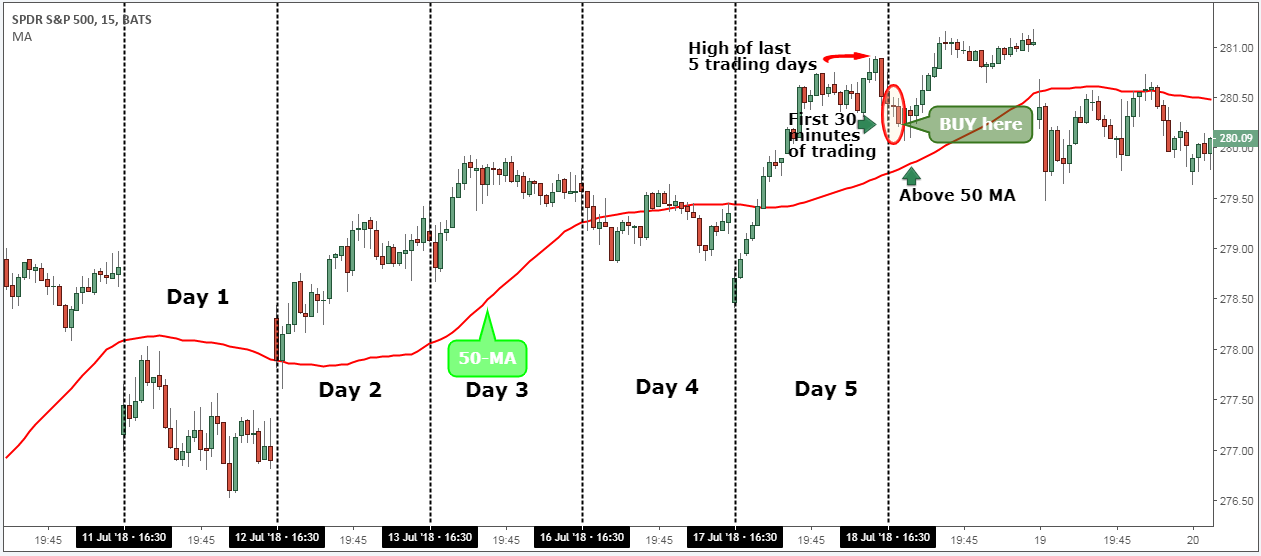
ETF Trading Strategy – How to Day Trade ETFs
In this article, we will talk about how ETF trading strategies can help you grow a small account quickly. When combined with the right strategy, an ETF can be one of the best and safest ways to consistently generate profits from the financial markets.
If this is your first time on our site, our team at Trading Strategy Guide welcomes you. Make sure you hit the subscribe button so you get Free Trading Strategies every week straight to your inbox.
ETFs are versatile financial instruments that suit any trading style. This means you can initiate ETF trading day or even rotate ETF trading. By taking care of the risks associated with trading ETFs, you can begin to enjoy some of the benefits.
We will highlight the benefits of adding an ETF to your portfolio and trading. However, we will also shed light on the risks associated with the ETF (exchange-traded fund) .
If you are not familiar with ETF trading and do not have a complete understanding of how to trade ETFs , we hope this ETF step-by-step guide will provide some guidance.
What is ETF Trading?
Exchange-traded funds (ETFs) are financial instruments designed to track the price of a specific basket of assets and are traded on US stock exchanges. Trading ETFs works exactly like trading stocks.
ETFs bring together, in one place, some of the best features offered by mutual funds and stocks. Most ETFs seek to track a benchmark index and trade on exchanges in shares like stocks. ETFs are available for every major asset class such as stocks or shares, fixed income or bonds, commodities, and cash.
For example, the SPDR S&P500 ETF (SPY) is tracking the S&P500 index.
ETFs offer a cheaper alternative to exposure to a sector that can be extremely difficult to trade.
For example, if trader Joe wants to invest in gold, he has many different methods. Joe can buy gold bars or a gold coin or trade goldfutures . However, these are difficult, time consuming and expensive methods to buy gold.
The cheapest option for Joe is to buy shares of a gold ETF like GLD, at the market price of gold. Joe can do this for a fraction of the price and with less effort. Learn more about how to trade gold here.
If you believe the entire stock market will rise, you can buy a stock index like the Dow Jones. You can buy all 30 companies that make up the Dow Jones Index, or buying DJIA futures can be really expensive.
If you want to do this for a fraction of the price, you can simply buy shares of a Dow Jones-trading ETF, like the DIA ETF.
Due to the volatile nature of ETFs, they are perfect candidates for day trading . Moving forward, we want to teach how ETF day trading works.
Day Trading ETFs
Day trading is one of the best ETF trading strategies as this environment is characterized by high volatility. This means you have the ability to buy and sell ETFs at any time throughout the trading day. There are many exchange-traded funds (ETFs), but today’s best ETFs are:
- SPDR S&P 500 (SPY)
- Gold Miner ETF (GDX)
- ProShares VIX ETF Short-Term Futures
- ProShares Ultra VIX ETF Short-Term Futures (UVXY)
- iShares MSCI Emerging Markets ETF (EEM)
It is also among the top 5 most actively traded ETFs in the US.
An exchange-traded fund (ETF) can provide you with very lucrative short-term opportunities. However, the odds of making money by gambling during the ETF trading day are very low. That’s why you need to play the game by a few rules.
Now, before we go any further, we always recommend that you get a piece of paper and pen and write down the rules of how to trade ETFs .
For this article, we will look at how to buy ETFs.
Step #1: Choose the right ETF for day trading
SPY ETF or SPDR S&P 500 ETF is the first and most popular Exchange Exchange Traded Fund ETF listed in the US. We like SPY day trading because it ranks for the biggest AUM and it has the largest trading volume. The SPY ETF tracks the performance of the world’s most popular stock index, the S&P 500.

Source: Forbes
These are reasons enough for us to choose SPY ETF as the right candidate for our ETF day trading strategy.
Don’t assume all exchange-traded funds are the same because they are not. If you’re not sure which trade to trade with, the most reliable ETF is the SPY ETF.
Moving forward, we will reveal what day trading rules you need to follow to successfully trade SPY.
Step #2: Apply a 50 Period Moving Average on the 15 Minute Chart
The 50-period moving average is one of the most popular indices in stock trading. The 50 MA is a sentiment level that many professional traders and investors use to gauge market sentiment.
Because many traders use the 50 moving average, it has more to do with price action. This is why we use the 50 MA in combination with an open trading range.

Now see how we combine the 50 MA with an open trading range.
See below:
Step #3: Only enter transactions after 10:00 AM ET
We like to focus on the open trading range when trading day ETFs. The morning session is when smart money usually enters the market and after that, the greatest volume occurs during the morning session.
By focusing only on the morning session, we avoid being glued to the chart all day and only trade with institutional money.
Regular trading hours for SPDR S&P 500 trusts begin at 9:30 AM ET. But, we prefer the first 30 minutes after opening, to wait and see what the smart money is doing.
Successful day trading driving ETFs is all about seizing those opportunities during the most volatile times of the trading day.
Step #4: Price needs to hold above the 50-MA and open in the upper part of the previous 5 day trading range
After we analyze how the market plays out in the first 30 minutes of the open, we look for prices to hold above the 50 moving average.
Second, the SPDR S&P 500 ETF also needs to open at the upper end of the previous 5-day trading range. Just tick your chart for the previous 5 trading days and the top price of that trading range.
If on Friday we open near the high and we hold above the 50 MA, we are good to buy SPY.

This brings us to the next important thing that we need to establish when trading ETFs, which is where to place our protective stop loss.
See below:
Step #5: Hide $0.25 SL below the 50 . moving average
With this mechanical day trading strategy we place a stop loss of $0.25 below the 50 moving average. If after the SPY open breaks below the 50 MA, it signals that the bulls are very weak. . We find this technical reading very meaningful for day trading.

Last but not least, we also need to determine where we take profits.
See below:
Step #6: Make profit if SPY advance $1
This trade setup is based on our experience that if all the above conditions are met, there is a very high chance for SPY ETF to rise at least $1. If your profit target is not reached first 4:00 ET close the trade manually.

**Note: above is an example of a BUY transaction. Use the same rules for SELL trades – but in reverse. In the image below you can see an example of an actual SALE transaction.

Conclusion – Exchange Traded Funds ETF
Day-traded funds offer simple investment opportunities and have lower operating costs than most other financial vehicles. Don’t underestimate the power of leveraged ETF trading if you want to take advantage of intraday volatility.
At the Trading Strategy Guide, we focus on technical analysis . We love technical analysis because it has worked for us for many years of trading and for many other professional traders.








